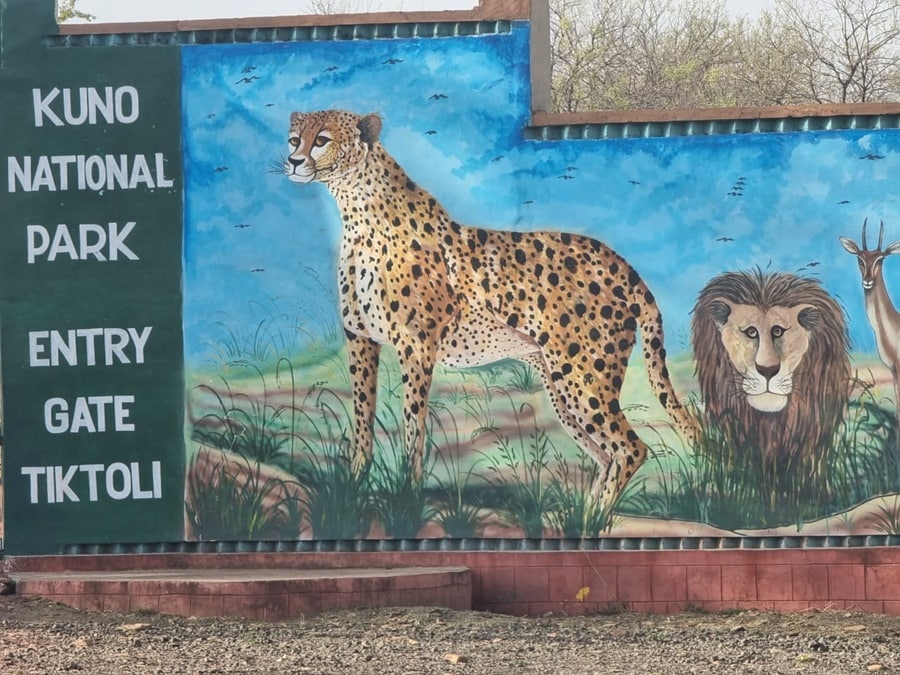A quarter of the cheetahs taken from Namibia and South Africa to India as part of a resettlement program there died within six months.
India imported eight cheetahs from Namibia in September and in February this year another 12 of the big cats were taken from South Africa to India. However, three adult cheetahs and three of the four cubs born in Kuno in March this year have already died.
According to Vincent van der Merwe, founder of the Meta Population project (TMI), which moves cheetahs between reserves to avoid inbreeding, overpopulation or extinction, the early days of relocation projects are usually difficult.
“The same thing happened when we wanted to resettle cheetahs in South Africa in the earlier years; we lost a lot of cheetahs, but we learned from our lessons and today we have the only growing cheetah population in the world. We remain positive and hope to finally prevail.”
Van der Merwe says the rest of the cheetahs are doing very well and regularly catch deer, chinkaras (Indian impalas) and four-horned antelopes.
“The deer is the most common goat in India, the chinkara is basically India’s version of the springbok, and the four-horned goat is similar to the ibex.
“People will not believe how similar the new habitat in India is to the Bushveld in South Africa, you will think you are in Thabazimbi,” says Van der Merwe.

However, most of the reserves in India are not fenced and the cheetahs can move between reserves.
“I have to admit that we are struggling without fences in India. Two of the Namibian cheetahs came out and made their home on an Indian farm about 200 km away from the reserve.
“Later we saw how they catch goats on the farmers’ farms. Fortunately, the Indian government compensates the farmers for their losses, but it remains difficult to capture and bring back the cheetahs every time. It is stressful for them to be sedated and placed in a small container while it is 45 °C outside.”

Cheetahs have been resettled in 72 reserves in South Africa since 1966, after which cheetahs were later also resettled in Malawi, Zambia, Mozambique and recently also in India, says Van der Merwe.
“We started in 2011 with 217 cheetahs on 41 reserves in South Africa. We now stand at 520 cheetahs on 72 reserves in five different countries.
For this reason, India has also joined the project to resettle cheetahs.
“They also work with Namibia, which donated eight of the 20 founding cheetahs.”
Why did the cheetahs die?
Van der Merwe says ten of the 12 South African cheetahs sent to India are still alive.
“In an unfortunate incident, two of the South African cheetah males killed a female. The males somehow got to the female and fractured her skull. We’ve seen males do this in Africa, but it rarely happens to a female.”
According to Van der Merwe, the other male from South Africa just died suddenly.
“We did a lot of tests on him, but could not determine the cause of his death. I think he was under a lot of stress. He was caught in a cage near Thabazimbi in the Waterberg district and we caught a lioness in a cage next to him the same evening.
“It completely traumatized him.

“For him, the move from South Africa to India was quite possibly too stressful, but it could also have been a snake – there are quite a few dangerous snakes in India. We also suspect that a nilgai (similar to a moose in South Africa) may have kicked him to death.”
Seven out of the eight Namibian cheetahs that were also sent to India are still alive.
“For some reason, Namibia sent three cheetahs – kept in cages – to India.
“Caged cheetahs are naturally going to struggle to adapt in that kind of environment with all the competing predators; we have already lost one of these caged cheetahs.”
Van der Merwe says cheetahs kept in cages usually struggle with kidney failure because their diet is “unnatural”.
“The female from Namibia who died already had kidney failure when she arrived in India and died as a result.”
One of the Namibian cheetah females (which was also kept in a cage) gave birth to four cubs. Three of the four cubs have already died due to heat.
According to Van der Merwe, cheetahs from southern Africa usually give birth just before winter because it is the easiest time to catch goat calves and because cubs struggle to survive the heat of summer.
“In India it is now high summer and the female cheetahs are still going to have to learn to adapt to their new environment.”
Why is relocation good?
Van der Merwe says the best news so far is the fact that there have not yet been any reported problems with competing predators such as tigers, leopards, bears, crocodiles or striped hyenas.
“There are an awful lot of leopards (almost a hundred) in the Kuno reserve, which is only a little bigger than the Pilanesberg.
“Another positive aspect of this project is the fact that we have not yet seen a single trap in the entire reserve – one of the biggest problems in Africa when we relocate cheetahs.”

According to Van der Merwe, the reason for this is that the inhabitants of India have a different outlook on nature.
“Indians have an Eastern religion and believe in human supervision of nature. Most South Africans belong to the Abrahamic religions and believe in human dominion over nature.
“For this reason, all of South Africa’s reserves are fenced (even if the fences are falling apart), but in India there are no fences and people live among the animals.
“They have a very different view of nature. In the city of Mumbai, for example, more than 40 leopards live and every night the leopards move through the city where they catch and eat dogs.”
Are we going to send more cheetahs from South Africa to India?
“We are probably going to have to send more cheetahs to India. At this stage there are only 17 cheetahs in India and these cheetahs are related to each other. We will therefore have to send cheetahs with new genes.”

According to van der Merwe, South Africa’s cheetah population is growing by 50 cheetahs per year.
“We have to send the cheetahs somewhere. Every year we get at least two to five new reserves in South Africa where we can resettle cheetahs, and then one or two more in Southern Africa, especially Mozambique, to grow the population there as well.
“We intend to send ten more cheetahs to India every year.”









